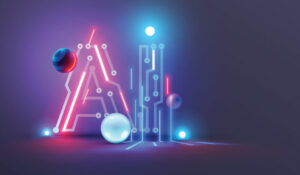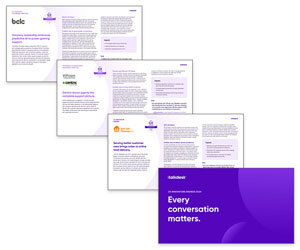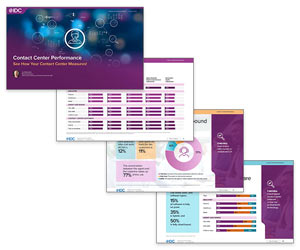Toussaint Celestin at Talkdesk breaks down what customer experience automation (CXA) really means, how it works, and the core technologies and processes that make it effective.
Customer experience automation (CXA) creates deeply personalized, consistent engagement throughout the entire customer lifecycle.
From helping prospects find the information they need to simplifying onboarding and service processes to strengthening long-term relationships through timely, relevant follow-ups, CXA is designed to elevate every interaction.
These same automations empower contact centre agents to do their jobs better, helping them craft faster, more accurate resolutions by surfacing relevant context and reducing repetitive tasks. It’s a win for customers and a win for the teams that support them.
What is Customer Experience Automation (CXA)?
Customer experience automation refers to the use of technology, particularly artificial intelligence (AI), machine learning, and data-driven workflows, to deliver personalised, timely, and consistent interactions across the entire customer journey.
Instead of relying solely on human agents for every message or service request, whether through chat, forms, or email, CXA automates key touchpoints while keeping the experience human-centred. The goal is to reduce friction, improve responsiveness, and foster stronger relationships at scale.
Exploring Customer Experience Automation: Four Essential Processes.
Four foundational processes work together to create scalable, personalized, and impactful customer journeys:
Orchestration
Strategic coordination of customer interactions across channels, teams, and systems. This ensures every touchpoint flows in sync with the broader customer journey, creating a cohesive, omnichannel experience.
Segmentation
Organising customers into groups based on shared characteristics such as behavior, demographics, or engagement level. This enables businesses to deliver more relevant content and experiences tailored to specific audience needs.
Personalisation
Using insights and data to tailor interactions to the individual, not just the segment. This could mean addressing someone by name, recommending resources based on recent activity, or proactively offering support when usage drops off.
Automation
Powering the execution of customer journeys by triggering actions based on specific conditions or events. Automation ensures the right actions happen at the right time, without delay or human error.
Together, orchestration sets the strategy, data segmentation defines the audience, personalization makes the experience feel human, and automation delivers it all at scale.
CX Technology: Seven Examples That Make Automation Transformational
Customer experience automation (CXA) is reshaping the way businesses engage with customers, moving beyond basic self-service tools to intelligent systems that resolve real issues, streamline operations, and improve satisfaction. Below are seven essential technology capabilities driving this transformation.
1. Multi-Agent Orchestration
Effective customer experience automation platforms rely on multi-agent orchestration to automate complex, multi-step processes in real time.
Specialised AI agents are assigned to specific tasks, such as verifying identity, retrieving data, or escalating requests, while an orchestrator coordinates execution across teams and systems.
This coordinated automation ensures seamless workflows, reduces manual handoffs, and enables faster, more consistent resolution of customer needs across the entire journey.
2. AI-Powered Agents
Modern automation goes far beyond basic chatbots. AI agents use real-time reasoning, contextual awareness, and advanced decision-making to handle complex conversations and execute tasks autonomously or in collaboration with human agents.
These agents can process service requests, assist live agents with next-best actions, summarize conversations, or complete back-office tasks, enabling organizations to scale support without increasing headcount.
3. Unified Data Intelligence
Automation is only effective when fueled by data that is timely, accurate, and contextual. A unified data layer aggregates structured information (like CRM records) and unstructured data (such as transcripts or emails), allowing AI systems to make smarter decisions.
With access to a complete customer view, automated workflows can personalize experiences, respond faster, and continuously learn from each interaction to improve over time.
4. Hyper Automation Tools
Hyper-automation refers to the use of advanced technologies to rapidly identify, design, and automate a wide range of business processes.
In the CX context, this includes modular applications that support routing, content optimization, compliance checks, identity validation, and more.
These tools work in concert, forming a feedback loop that discovers friction points, builds solutions, orchestrates automation, and measures outcomes, delivering continuous improvement at scale.
5. Industry-Specific Intelligence
Generic automation tools often fall short when it comes to complex or regulated industries. CXA platforms that embed industry-specific knowledge into their AI agents can deliver faster time-to-value and higher accuracy.
Whether it’s automating patient scheduling in healthcare, managing claims in insurance, or personalizing experiences in retail, tailored AI workflows reduce risk, accelerate ROI, and improve customer outcomes.
6. Omnichannel Continuity
Today’s customers interact across a variety of channels, chat, voice, email, social, and more, and expect continuity at every step.
Customer experience automation solutions unify these channels so that automation can follow the customer wherever they go, preserving context and ensuring seamless transitions.
Automated systems can initiate, handle, or escalate interactions across any channel, creating a frictionless experience that feels consistent and connected.
7. Secure, flexible architecture.
Scalability and trust are essential for successful automation. Responsible CXA platforms offer built-in safeguards like content filters, prompt controls, data redaction, and human oversight, ensuring outputs are accurate, compliant, and aligned with brand standards.
Equally important is flexibility. Open architectures allow organizations to use their own AI models, integrate third-party tools, and deploy automation within any environment, cloud, hybrid, or on-prem, without being locked into a single vendor.
The Benefits and Challenges of Customer Experience Automation
Customer experience automation delivers both immediate and long-term advantages by optimizing how businesses engage, support, and retain their customers.
However, like any transformative technology, it also presents challenges that require strategic oversight and thoughtful implementation.
Key Benefits of Customer Experience Automation
1. Enhanced Customer Satisfaction
Automation enables faster, more accurate responses through intelligent routing, virtual assistants, and AI agents. This reduces wait times and ensures customers receive relevant, helpful information, boosting satisfaction and brand perception.
2. Always-On, Omnichannel Support
With AI-powered systems available 24/7 across voice and digital channels, customers can engage anytime, anywhere, receiving consistent service no matter the platform. This improves convenience and customer trust.
3. Increased Agent Efficiency and Scale
By automating repetitive and administrative tasks, CXA frees human agents to focus on more complex or emotionally nuanced cases.
This drives higher productivity and allows service teams to scale without proportional increases in headcount.
4. Faster Resolution and Proactive Service
CXA leverages real-time data and historical context to anticipate needs and resolve issues more quickly. Intelligent escalation, recommendations, and guided workflows reduce time-to-resolution and improve first contact outcomes.
5. Consistency and Cost Savings
Automation ensures that processes, tone, and quality remain consistent across every touchpoint. At the same time, it reduces manual effort and lowers the cost to serve, improving margins while maintaining high service standards.
Challenges to Consider With Customer Experience Automation
1. Handling Complex or Sensitive Situations
Automation may fall short when empathy, critical thinking, or contextual judgment are required. Human agents remain essential for resolving emotionally charged or multifaceted customer issues.
2. Balancing Scale With Personalisation
Generic automated responses can erode trust. It’s crucial to maintain a personalized touch—using customer data to tailor interactions and know when to hand off to human agents.
3. Ensuring Data Accuracy and Integrity
AI agents depend on the quality and consistency of the data they access. Inaccurate or outdated data can lead to poor decision-making, damaged experiences, and compliance risks.
4. Privacy and Compliance Risk
CXA systems must safeguard customer information and adhere to data protection regulations like GDPR and CCPA. security, transparency, and governance are essential components of any automation strategy.
5. Continuous Oversight and Optimisation
Successful CXA isn’t a ‘set it and forget it’ solution. It requires continuous monitoring, performance measurement, and adjustments to strike the right balance between automation and the human touch.
This blog post has been re-published by kind permission of Talkdesk – View the Original Article
For more information about Talkdesk - visit the Talkdesk Website
Call Centre Helper is not responsible for the content of these guest blog posts. The opinions expressed in this article are those of the author, and do not necessarily reflect those of Call Centre Helper.
Author: Talkdesk
Reviewed by: Megan Jones
Published On: 12th Aug 2025
Read more about - Guest Blogs, Talkdesk, Toussaint Celestin




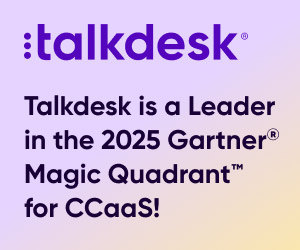

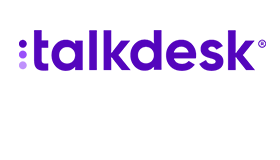 Talkdesk is a global customer experience leader for customer-obsessed companies. Our contact center solution provides a better way for businesses and customers to engage with one another.
Talkdesk is a global customer experience leader for customer-obsessed companies. Our contact center solution provides a better way for businesses and customers to engage with one another. 



